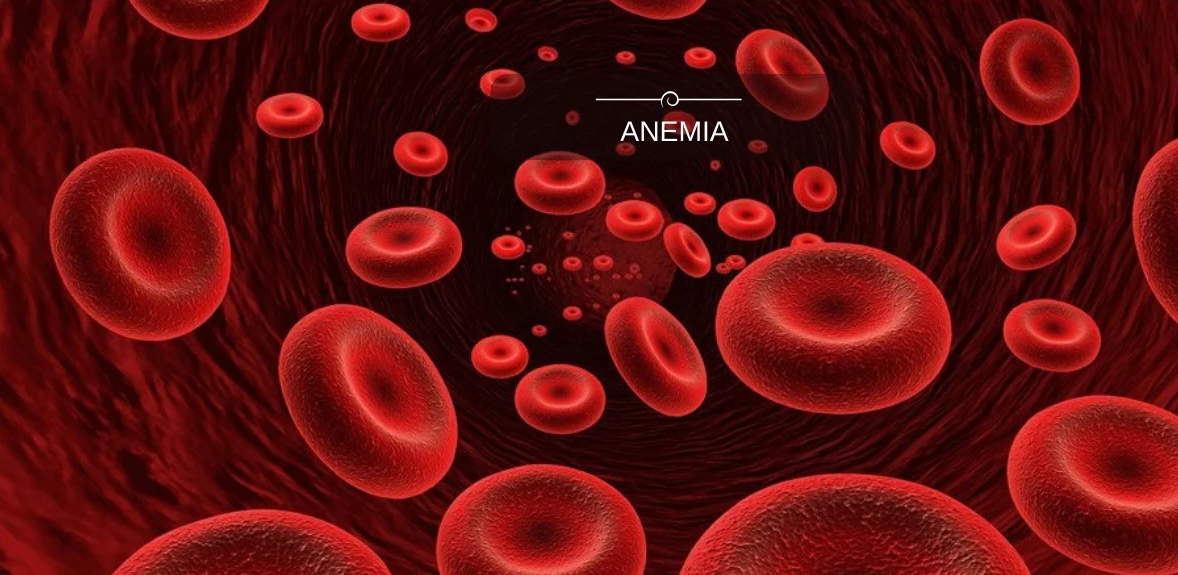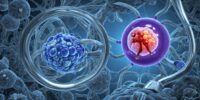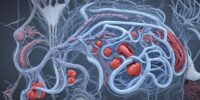Understanding Anemia: Causes, Symptoms, And Treatments

Anemia is a common blood disorder that affects millions of people worldwide. It is characterized by a decrease in the number of red blood cells or a decrease in the amount of hemoglobin in the blood. Anemia can result from a variety of causes, including nutritional deficiencies, chronic diseases, genetic disorders, and medications.
Understanding the causes, symptoms, and treatments of anemia is essential for healthcare professionals and patients alike.
This article will explore the different types of anemia, including those caused by nutritional deficiencies, chronic diseases, genetic disorders, and medications. It will also describe the symptoms of anemia and the various treatment options available.
By providing a comprehensive overview of anemia, this article aims to increase awareness of this common blood disorder and help individuals better understand its causes and treatments.
Key Takeaways
- Anemia is a common blood disorder characterized by a decrease in red blood cells or hemoglobin and can be caused by nutritional deficiencies, chronic diseases, genetic disorders, and medications.
- Symptoms of anemia include fatigue, weakness, shortness of breath, and pale skin, and treatment options vary depending on the underlying cause and severity of symptoms.
- Nutritional deficiencies such as iron, vitamin B12, folic acid, and vitamin C can be addressed through dietary changes and supplementation, while chronic diseases can impact the body’s ability to produce and maintain healthy red blood cells.
- Blood transfusions, iron supplements, medications, and lifestyle changes may be necessary for managing anemia, and a personalized treatment plan is required for individual cases, which should be determined by healthcare providers.
What is Anemia?
Anemia is a medical condition characterized by a deficiency in the number or quality of red blood cells, resulting in a reduction of the amount of oxygen they can carry to the body’s tissues. This condition can be caused by a number of factors, including blood loss, a decrease in the production of red blood cells, or an increase in their destruction.
Anemia can also occur as a result of a variety of underlying health conditions, such as kidney disease, liver disease, or autoimmune disorders.
Symptoms of anemia can vary depending on the severity of the condition and the underlying cause. Some of the most common symptoms of anemia include fatigue, weakness, shortness of breath, and pale skin. In some cases, individuals with anemia may also experience dizziness, headaches, or an irregular heartbeat.
It is important to seek medical attention if you experience any of these symptoms, as they may be indicative of an underlying health condition that requires prompt treatment.
Types of Anemia
There are several different classifications of anemia based on their underlying etiology. Some of the most common types of anemia include iron-deficiency anemia, vitamin-deficiency anemia, hemolytic anemia, and aplastic anemia.
Iron-deficiency anemia is caused by a lack of iron in the body, which is necessary for the production of hemoglobin. This type of anemia is often caused by chronic blood loss, such as heavy menstruation, stomach ulcers, or colon cancer. Vitamin-deficiency anemia can be caused by a lack of vitamin B12 or folate, which are both necessary for the production of red blood cells. Hemolytic anemia occurs when red blood cells are destroyed at a faster rate than they can be produced, which can be caused by genetic conditions, infections, or autoimmune disorders. Aplastic anemia is a rare type of anemia that occurs when the bone marrow is unable to produce enough new blood cells, which can be caused by radiation, chemotherapy, or certain medications.
The following table provides a summary of the different types of anemia, their underlying causes, and common symptoms:
| Type of Anemia | Underlying Cause | Symptoms |
|---|---|---|
| Iron-deficiency anemia | Lack of iron in the body | Fatigue, weakness, pale skin, shortness of breath |
| Vitamin-deficiency anemia | Lack of vitamin B12 or folate | Fatigue, weakness, pale skin, shortness of breath, tingling in hands and feet |
| Hemolytic anemia | Red blood cells destroyed faster than produced | Fatigue, weakness, jaundice, dark urine |
| Aplastic anemia | Inability of bone marrow to produce enough new blood cells | Fatigue, weakness, frequent infections, uncontrolled bleeding |
Understanding the different types of anemia can help in the diagnosis and treatment of the condition. It is important to consult with a healthcare provider if you are experiencing symptoms of anemia to determine the underlying cause and receive appropriate treatment.
Nutritional Deficiencies and Anemia
Nutritional deficiencies can lead to the development of anemia, as certain vitamins and minerals are essential for the production of healthy red blood cells. The four most common nutritional deficiencies that can cause anemia are:
- Iron deficiency: Iron is a key component of hemoglobin, the protein in red blood cells that carries oxygen throughout the body. Without enough iron, the body can’t produce enough hemoglobin, leading to anemia. Iron deficiency anemia is the most common type of anemia, particularly in women of childbearing age and people who follow a vegetarian or vegan diet.
- Vitamin B12 deficiency: Vitamin B12 is necessary for the production of red blood cells and the maintenance of a healthy nervous system. It’s found almost exclusively in animal products, so people who follow a vegan or vegetarian diet are at risk of deficiency. Over time, vitamin B12 deficiency can damage the nervous system, so it’s important to catch it early.
- Folic acid deficiency: Folic acid, also known as folate, is essential for the production of DNA and red blood cells. Pregnant women and people who drink excessive amounts of alcohol are at risk of folic acid deficiency, as are those who follow a diet low in fruits and vegetables.
- Vitamin C deficiency: Vitamin C helps the body absorb iron, so a deficiency can contribute to iron deficiency anemia. It’s rare for a person to be deficient in vitamin C, but it can happen in people who don’t consume enough fruits and vegetables.
It’s important to address nutritional deficiencies that can lead to anemia through dietary changes and supplementation, as untreated anemia can have serious health consequences.
Chronic Diseases and Anemia
Chronic diseases such as kidney disease, cancer, and rheumatoid arthritis can increase the risk of developing anemia due to the impact they have on the body’s ability to produce and maintain healthy red blood cells.
In kidney disease, for example, the kidneys are responsible for producing a hormone called erythropoietin, which stimulates the production of red blood cells. When the kidneys are damaged, they may not produce enough of this hormone, leading to anemia.
Similarly, cancer and its treatments such as chemotherapy can damage the bone marrow, which is responsible for producing red blood cells, leading to anemia.
Rheumatoid arthritis, an autoimmune disease that causes inflammation in the joints, can also increase the risk of anemia. The inflammation can interfere with the production of red blood cells in the bone marrow. Additionally, some medications used to treat rheumatoid arthritis can cause gastrointestinal bleeding, which can also lead to anemia.
Treating the underlying chronic disease is crucial in managing anemia in these cases, along with addressing any nutritional deficiencies that may be contributing to the anemia. In severe cases, blood transfusions or erythropoietin therapy may be necessary.
Genetic Disorders and Anemia
Genetic disorders such as sickle cell anemia and thalassemia can result in abnormal hemoglobin production, leading to anemia. Sickle cell anemia is a genetic disorder that affects the red blood cells, causing them to become crescent-shaped and rigid. This shape makes it difficult for the cells to pass through small blood vessels, leading to blockages and reduced oxygen flow to the body’s tissues and organs.
Symptoms of sickle cell anemia may include fatigue, pain, and increased susceptibility to infections. Thalassemia is another genetic disorder that affects the production of hemoglobin, the protein in red blood cells that carries oxygen. It is caused by mutations in the genes that control hemoglobin production.
People with thalassemia may have either a reduced amount of hemoglobin or abnormal hemoglobin production, leading to anemia. Symptoms of thalassemia may include fatigue, weakness, and pale skin. Treatment for genetic disorders causing anemia may include blood transfusions, medications to control symptoms, and in some cases, bone marrow transplantation.
Medications and Anemia
Pharmaceutical drugs, particularly chemotherapy agents, can lead to anemia by interfering with the production of red blood cells.
Chemotherapy drugs are aimed at destroying rapidly dividing cells, including cancer cells. Unfortunately, these drugs also affect healthy cells, including those in the bone marrow that produce red blood cells.
This leads to a decrease in the number of red blood cells and ultimately results in anemia.
Other medications can also cause anemia as a side effect. For example, nonsteroidal anti-inflammatory drugs (NSAIDs) such as aspirin and ibuprofen can cause gastrointestinal bleeding, which leads to a loss of blood and subsequent anemia.
Similarly, blood-thinning medications like heparin and warfarin can cause bleeding and anemia.
It is important for individuals taking these medications to be aware of the potential side effects and to discuss any concerns with their healthcare provider.
Symptoms of Anemia
One of the most common indicators of anemia is fatigue, which can be caused by a lack of oxygen circulating in the body due to a decrease in red blood cells. This can lead to feelings of weakness, exhaustion, and difficulty concentrating, making it difficult to perform daily tasks.
Other symptoms of anemia may include shortness of breath, pale skin, headaches, dizziness, and cold hands and feet.
In addition to fatigue, anemia can also cause physical changes in the body. For example, some people may experience brittle or spoon-shaped nails, while others may notice that their hair becomes thin or falls out more easily. Additionally, anemia can sometimes cause a sore or swollen tongue, as well as a desire to eat unusual substances such as ice or dirt.
If you are experiencing any of these symptoms, it is important to speak with your healthcare provider to determine whether or not you have anemia and what treatment options are available.
Three common symptoms of anemia include:
- Fatigue and weakness due to a lack of oxygen in the body.
- Physical changes such as brittle nails, thinning hair, and swollen tongue.
- Unusual cravings such as a desire to eat ice or dirt.
Treatment Options for Anemia
There are various options available for managing anemia, including dietary changes, blood transfusions, and iron supplements. The specific treatment option recommended will depend on the individual’s underlying cause of anemia and the severity of their symptoms. In some cases, treating the underlying cause of anemia, such as a vitamin deficiency or a chronic illness, may be enough to resolve the anemia.
For individuals with more severe cases of anemia, blood transfusions may be necessary to quickly increase red blood cell counts. Blood transfusions involve receiving donated blood that has been screened and matched to the recipient’s blood type. Iron supplements can also be effective in treating iron-deficiency anemia, which is the most common type of anemia. It is important to consult with a healthcare provider before starting any new treatments for anemia, as some treatments may have potential side effects or interactions with other medications.
| Treatment Option | Description |
|---|---|
| Dietary Changes | Increasing intake of iron-rich foods, such as red meat, spinach, and beans, or taking vitamin B12 or folate supplements. |
| Blood Transfusions | Receiving donated blood that has been screened and matched to the recipient’s blood type to quickly increase red blood cell counts. |
| Iron Supplements | Taking iron supplements to treat iron-deficiency anemia, the most common type of anemia. |
| Medications | Prescribed medications, such as erythropoietin, to stimulate the production of red blood cells. |
| Lifestyle Changes | Managing underlying conditions that may be causing anemia, such as kidney disease or cancer, or avoiding alcohol and tobacco. |
Overall, treatment options for anemia vary depending on the underlying cause and severity of symptoms. While some cases of anemia can be managed with dietary changes or medication, others may require more intensive treatments such as blood transfusions. It is important to work with a healthcare provider to determine the best course of treatment for individual cases of anemia.
Conclusion
Anemia is a condition that affects millions of people worldwide. It is a condition caused by a lack of red blood cells or hemoglobin in the blood. There are several types of anemia, including nutritional deficiencies, chronic diseases, genetic disorders, and medication-induced anemia.
Symptoms of anemia can vary, but common symptoms include fatigue, weakness, shortness of breath, and pale skin. Treatment options for anemia depend on the underlying cause of the condition. Nutritional deficiencies can be treated with supplements or dietary changes, while chronic diseases require managing the underlying condition. Genetic disorders may require ongoing medical monitoring and treatment, and medication-induced anemia may require adjusting or discontinuing certain medications.
In conclusion, anemia is a complex condition that can be caused by various factors. It is essential to understand the different types of anemia and their symptoms to receive proper diagnosis and treatment. With the appropriate treatment, individuals with anemia can manage their condition and improve their quality of life. It is crucial to seek medical advice if experiencing symptoms of anemia, as early intervention can prevent further complications.








